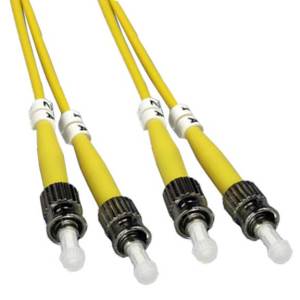What Makes Fiber Optic Cables Better Than Copper Cables?
Fiber Optic cables are the first choice when it comes to making network installations and upgrades. This is because they transmit data really fast. They’re also the most preferred option for enabling good quality internet connection. So what else makes them superior to copper cables? Let’s check out.

1. Thin And Robust
As compared to copper cables, fiber Optic cables are much lighter and thinner in weight. Plus, as fiber doesn’t carry electric current, the data transmission doesn’t get affected due to electromagnetic interference. For every fiber optic cable, the pulling specifications are 10 times more than copper cables. Also, storing and handing them is extremely easy due to its small size. Unlike copper cables, they don’t offer fire hazard which makes them safer to use.
2. Better Speed
There is a core in fiber optic cables that carries light in order to transmit data. It enables the cables to carry signals at a speed which is only 31% slower than the speed of light. And that is what makes them faster than CAT5 or CAT6 copper cables. When you use fiber cables, you will observe that there is much lesser signal degradation as compared to copper cables.
3. Remarkable Bandwidth
Copper cables have a limited bandwidth as compared to fiber optic cables. This is because they were designed keeping the voice transmission in mind. Fiber offers a standardized performance of up to 10 Gbps and has a greater bandwidth. It can also carry more information with better fidelity as compared to copper wires. However, the fiber speed depends on the type of cable used. Most of the CATV and telephone companies are converting to fiber due to the kind of bandwidth it offers.
4. Greater Reliability
Fiber optic cables are immune towards temperature changes, moisture and extreme weather conditions. Its core is made of glass which acts like an insulator letting no electric current flow through it. It also stops any kind of electromagnetic interference and radio frequency interference. So there is no need to worry even if you want to run a fiber optic cable next to industrial equipment. Fiber cables are less vulnerable to temperature changes and can also be submerged inside water.
5. Superior Security
With fiber cables, your data is much safer. It is not possible to tap a fiber cable. Even if it is tapped, it is easy to monitor such an activity as the cable leaks light and fails the entire system. Hence, if someone tries to damage the physical security of your fiber system, you will get to know about it in no time. As fiber networks enable you to put all your hardware in a centralized location, you do not need to have wiring closets with equipment all over your building.
6. Covers A Longer Distance
10 Gbps single mode fiber cables have the capacity to carry signals up to 25 miles. Copper cables, on the other hand, have a typical 328 foot limitation. The distance covered by a fiber optic cable depends on the type of cable, its wavelength and the type of network it is used for.
If you want better and faster connectivity, it is advisable to choose Fiber Optic cables over copper cables. You can buy these cables online and choose the one that fits the best for your needs.
~~ *** ~~



Comments
Post a Comment